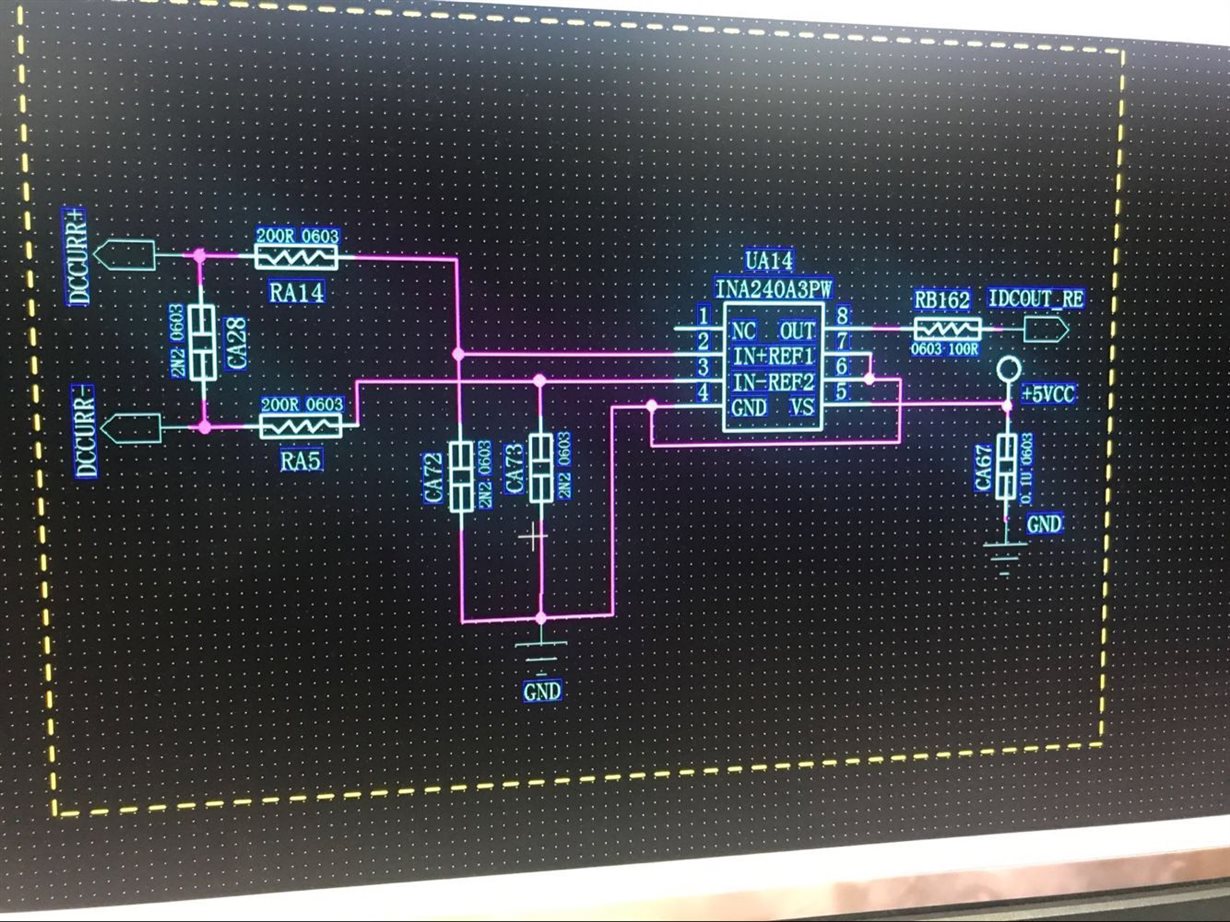Hi,
Customer designed Battery testing solution used current sensing IN240A3 .the schematic as below,the design spec is output 60A current and the accurancy is 0.1%, so the output current error is less than 60mA. From INA240A3 datasheet,(the Gain is 100V/V, and gain error type value is 0.05% and max value is 0.2%). Now when power up the system, input 1A current source(50mV) at DCCURR+/DCCURR- ,there is a output error about 2~3mV voltage at output side, it means 60mA current error at 3mV voltage error. and it will beyond the system spec. when operation time. At same condition, replaced TI INA301A3( Gain is 100V/V, and max gain error is 0.1%) get the same result. Customer want to calibrate the gain error, but confused the gain error is not stable and can't set the gain coeffiecient .Customer want to know how to fixed it. thanks!


